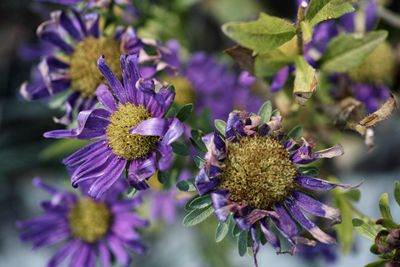What Causes Wilting Asters?
Aster fusarium wilt is a fungal issue that is soilborne and may remain in your beds indefinitely. It may also come in with soil your plants are potted in. Aster wilt most often attacks those in bloom. Leaves on the bottom or one side yellow and buds and blooms drop from the infection. A brownish fungal discoloration of vascular tissue is present on the stem near the base.
Managing Aster Wilt Symptoms
Affected plants should be removed and disposed of properly so the fungus does not spread. Burn or put in the trash. Don’t compost this or other diseased plant material. If you’ve lost asters to wilt, avoid planting them again in the same area. Avoid moving this soil to other flowerbeds. You may remove and dispose of it and replace with fresh potting medium. Replant with disease-resistant cultivars, such as Gem mixed or Dwarf Queen, keeping a close eye on the growing asters for wilt symptoms. While it can be difficult to learn how to treat aster wilt, solarizing the soil between plantings sometimes kills the fungus. To solarize the soil, rototill the area and break up all clumps. Water in and allow to dry out for two days. Cover the area with a clear plastic, such as anti-condensation film, tucking the edges into the soil. Leave the wrap in place four to six weeks in summer, sometimes longer.
